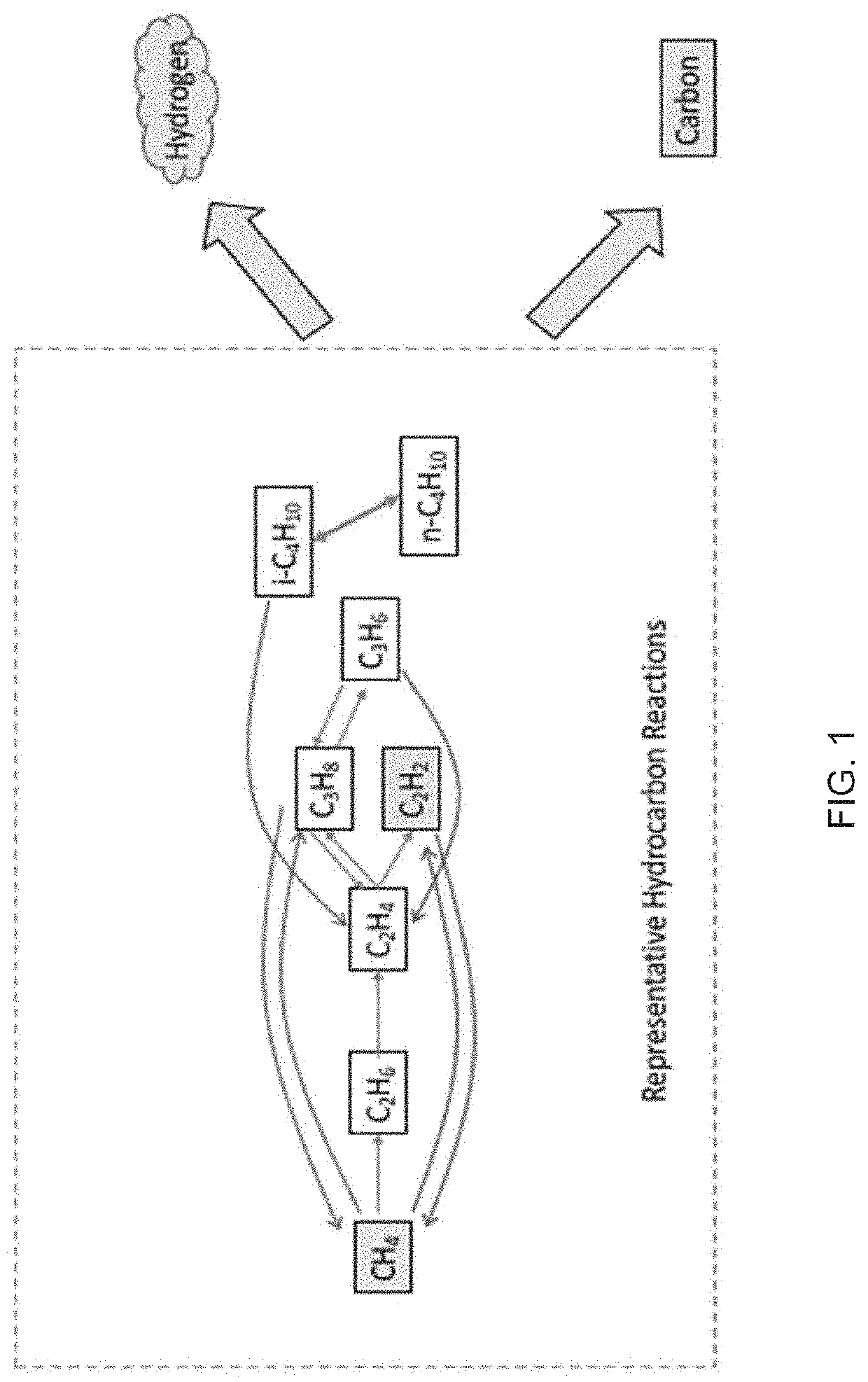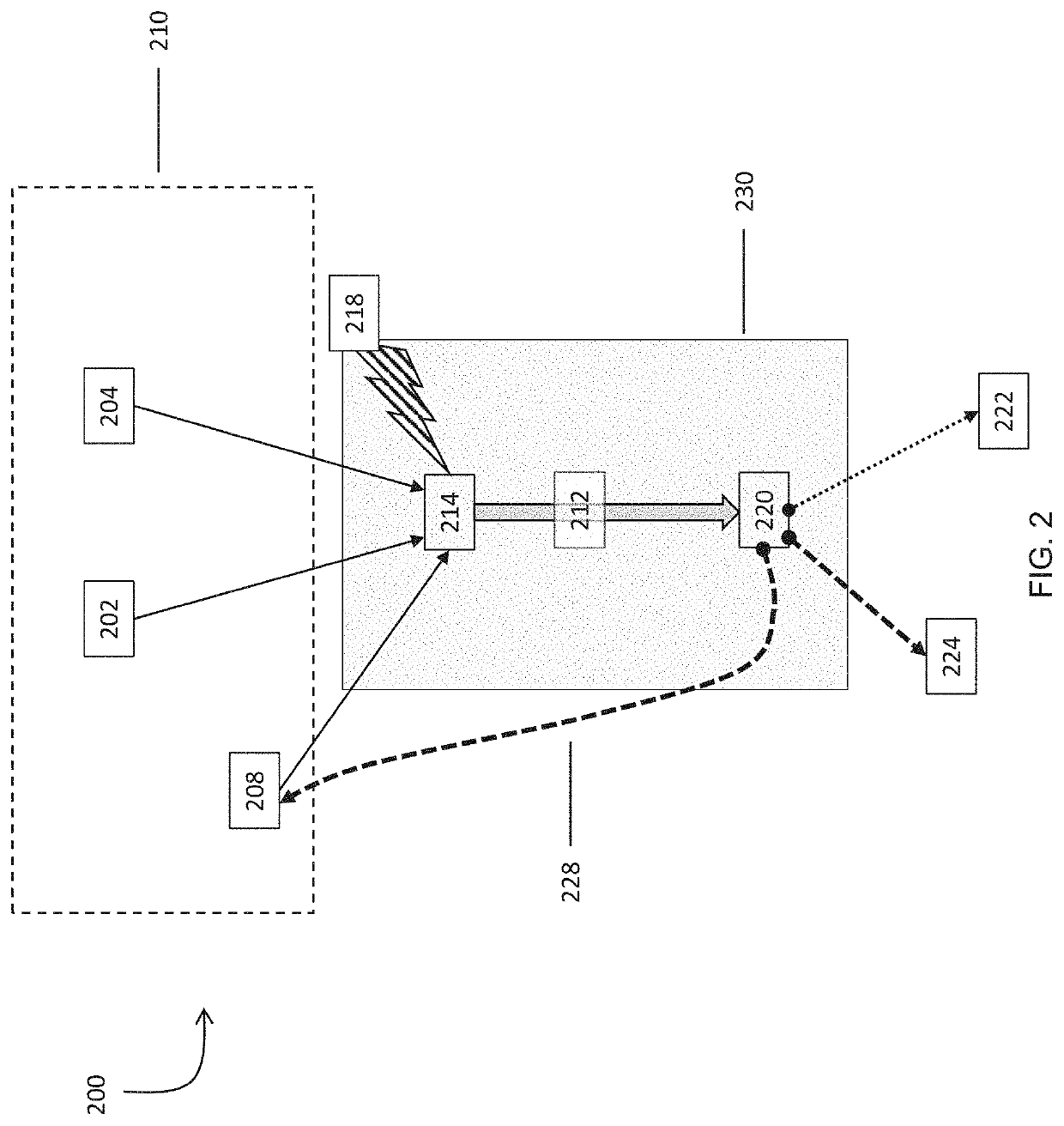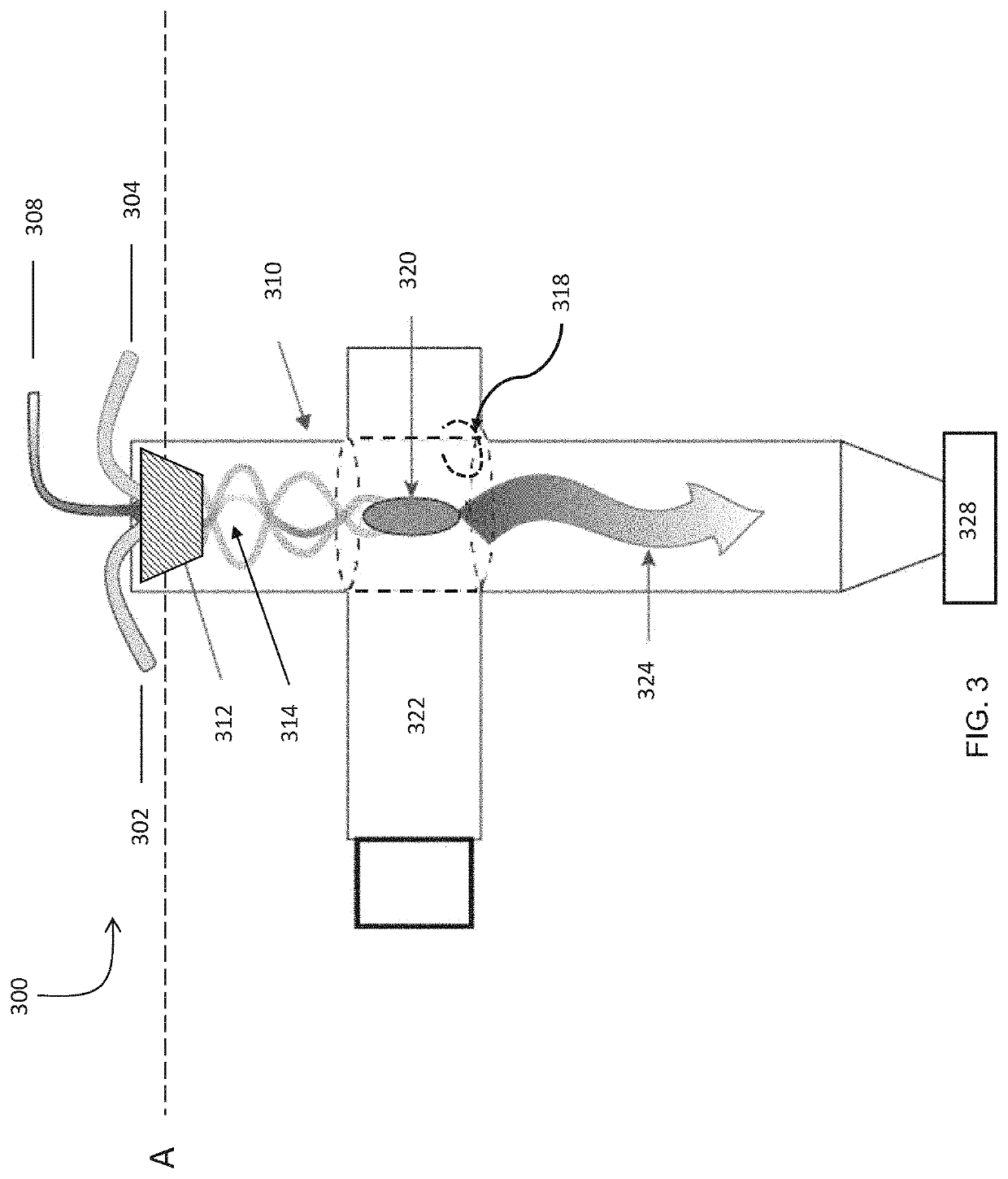Systems and methods for processing gases
a technology of systems and gases, applied in the field of systems and methods for processing gases, can solve the problems of acetylene contamination with impurities, contamination raises concerns, and the difficulty in recovering the acetylene it contains, and achieves significant engineering challenges
- Summary
- Abstract
- Description
- Claims
- Application Information
AI Technical Summary
Benefits of technology
Problems solved by technology
Method used
Image
Examples
example 1
[0413]A flow of precursor gas, comprised of 60 standard liters per minute of 99.9% purity methane, 90 standard liters per minute of 99.9% purity hydrogen, and 6 standard liters per minute of nitrogen, was supplied through a gas injector apparatus similar to that described in FIGS. 4A and 4B, into an 50 mm outer diameter, 45 mm inner diameter quartz tube kept at a pressure of 70 Torr. The precursor gas was subjected to 19 kW of incident 915 MHz microwave power in a plasma reactor apparatus similar to that described in FIG. 3. 95.7% of the methane contained in the precursor gas was converted to hydrogen and hydrocarbon products. The hydrocarbon composition of the outflow gas leaving the reactor is described in Table 6 below, as analyzed by a gas chromatograph.
TABLE 6ComponentMol %Acetylene15.12Hydrogen82.97Methane1.41Ethylene0.14Propane0.01Propadiene0.01Diacetylene0.29Vinyl Acetylene0.03Benzene0.02Carbon Solids and higher-order hydrocarbonsTrace
[0414]The outflow gas from the reactor w...
example 2
[0417]A flow of precursor gas, comprised of 20 standard liters per minute of 99.9% purity methane, 20 standard liters per minute of ethane, 95 standard liters per minute of 99.9% purity hydrogen, and 6 standard liters per minute of nitrogen was supplied through a plasma reactor apparatus as described in Example 1 and reacted with 18 kW of incident 915 MHz microwave power using the plasma reactor apparatus used in Example 1. 97.9% of the methane and ethane contained feed gas was converted to hydrogen and hydrocarbon products. The hydrocarbon composition of the outflow gas from the reactor is described in Table 9 below, as analyzed by a gas chromatograph.
TABLE 9ComponentMol %Acetylene16.70Hydrogen72.73Methane0.75Ethylene0.35Propane0.01Propadiene0.01Diacetylene0.38Vinyl Acetylene0.05Benzene0.03Carbon SolidsTraceHigher-Order HCs
example 3
[0418]A flow of precursor gas, comprised of 110 standard liters per minute of 99.9% purity methane and 11 standard liters per minute of nitrogen, was supplied through a gas injector apparatus, similar to that described in FIGS. 4A and 4B, into an 80 mm outer diameter, 75 mm inner diameter quartz tube. The precursor gas was subjected to 11 kW of incident 915 MHz microwave power in a plasma reactor apparatus as described in FIG. 3. 50.7% of the methane contained in the precursor gas was converted to hydrogen and hydrocarbon products. 7% of the converted methane yielded carbon solids and polycyclic aromatic hydrocarbons. 76% of the converted methane yielded acetylene.
PUM
| Property | Measurement | Unit |
|---|---|---|
| Fraction | aaaaa | aaaaa |
| Fraction | aaaaa | aaaaa |
| Fraction | aaaaa | aaaaa |
Abstract
Description
Claims
Application Information
 Login to View More
Login to View More - R&D
- Intellectual Property
- Life Sciences
- Materials
- Tech Scout
- Unparalleled Data Quality
- Higher Quality Content
- 60% Fewer Hallucinations
Browse by: Latest US Patents, China's latest patents, Technical Efficacy Thesaurus, Application Domain, Technology Topic, Popular Technical Reports.
© 2025 PatSnap. All rights reserved.Legal|Privacy policy|Modern Slavery Act Transparency Statement|Sitemap|About US| Contact US: help@patsnap.com



